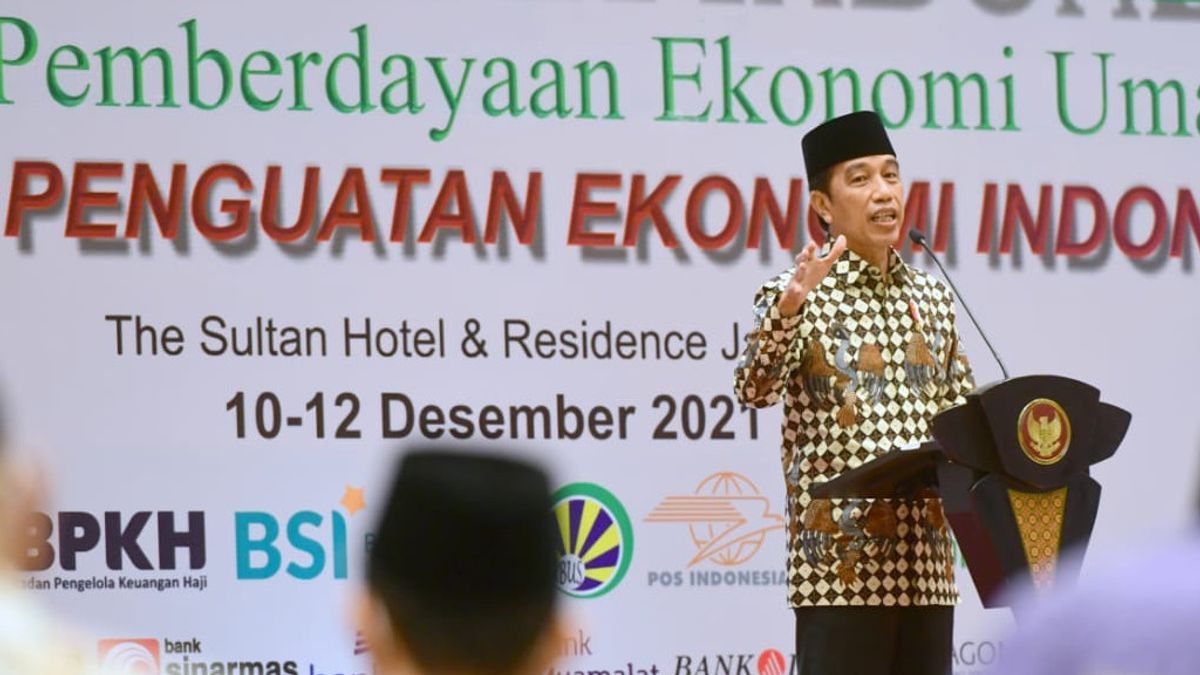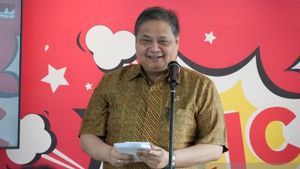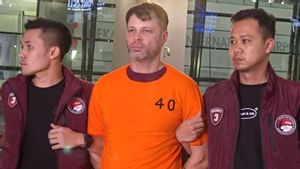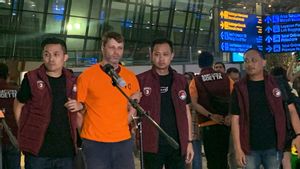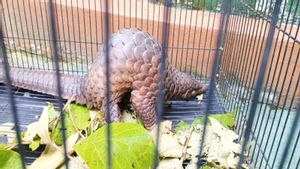JAKARTA - The issue of inequality in land ownership is currently being discussed in the public sphere. The discussion heated up when the Deputy Chair of the Indonesian Ulema Council, Anwar Abbas, also questioned the Gini index of the land ratio which he said was concerning. So how severe is the inequality of land ownership in Indonesia?
At the Second People's Economic Congress of the Indonesian Ulema Council (MUI) Anwar Abbas made a "strong" criticism of President Joko Widodo (Jokowi). One of the things that Anwar said in his speech was about the Gini index of Indonesia's land ratio which he said was concerning, namely 0.59 percent.
"This means that 1 percent of the population controls 59 percent of the land in this country. Meanwhile, the 99 percent only controls 41 percent of the land in this country," said Anwar.
Jokowi answered Anwar's statement in cash in his remarks. According to him, the government is in the process of distributing agrarian reform with a total target of reaching 12 million hectares. Currently, the achievement has reached 4.3 million hectares. Jokowi also said that currently, the government already has a land bank, to retrieve the abandoned HGU and HGP.
"God willing, I can start this month or maybe next month I will start to remove the abandoned ones one by one. Because there are so many. The concession has been given, it has been more than 20-30 years but we can't do anything about it. So we can't give it to the others," said Jokowi.
Jokowi even offered congress participants to come to him if he needed a very large amount of land. He promised to find the land, but with a calculation of a feasible proposal. "If you have any, please come to me, accompanied by Buya Anwar Abbas."

Previously, issues related to land tenure also surfaced after a viral video clip about land tenure in East Kalimantan, the area that will later become the nation's capital (IKN). The video reporting the JATAM study was uploaded by Narasi.
The JATAM report reveals a number of names that control a number of lands in IKN, the total area of which reaches 256,142 hectares. For example, there is the name Hashim Djojohadikusumo, the younger brother of Defense Minister Prabowo and the President Commissioner of PT. ITCI KU. He is noted to have controlled a concession area of 173,395 hectares.
Then there is also the name of Sukanto Tanoto, the shareholder of PT. ITCI HM which has a land area of 161,127 hectares. In addition, there is also the son of Politician Setya Novanto, Rheza Herwindo, a shareholder of PT. Mutara Panca Enchantment. There is the Coordinating Minister for Maritime Affairs and Investment, Luhut Pandjaitan, a shareholder in PT. Toba Group, and Politician, Yusril Ihza Mahendra.
Land tenure through company concessions in IKN, according to the National JATAM Coordinator, Merah Johansyah, ensures and secures the investment of the oligarchs. "On the contrary, the voices of the indigenous Paser Balik people were ignored after their living space was seized by PT ITCI when they entered the area in the 1960s."
"A total of 150 Paser Balik families in Pamaluan Village or ring 1 IKN in North Penajam Paser Regency are again worried because Jokowi's decision to move the capital never asked for their opinion. In fact, when the new capital city project was announced, PT ITCI Hutan Manunggal was even more violent quickly expand their land tenure at the expense of their customary territory," it wrote.
How big is the land gap?One way to measure inequality is to use the Gini ratio of land ownership. As we know, the Gini ratio scale is between 0-1 where the closer the number is to 0, the smaller the level of inequality.
For four decades, according to data from the Central Statistics Agency quoted from the Final Report on Inequality of Land Tenure and Ownership Research (2019) released by the Ministry of ATR, the Gini ratio for land ownership has fluctuated in the range of 0.50-0.72 values. This value is in the category of moderate and high inequality.
For example, in 2013, the inequality in land ownership reached 0.68. This means that only 1 percent of the Indonesian people control 68 percent of land resources.
Meanwhile, in 2020, the Minister of Agrarian Affairs and Spatial Planning (ATR) Sofyan Djalil explained that the Gini index of the land ownership ratio was at 0.54-0.67. "Land ownership in Indonesia is unfair, because a small group of cities controls a lot of land," Sofyan was quoted as saying by Detik.
According to Sofyan, the Gini index of the land ownership ratio in Indonesia is still much higher than the Gini ratio of income levels, which is already below 0.4. In practice, the Gini coefficient with a high degree of inequality ranges from 0.50 to 0.70, moderate inequality ranges from 0.36 to 0.49, while the distribution is relatively even if the figures range from 0.20 to 0.35.

In addition to the Gini ratio index, the measurement of inequality in land ownership can also be seen using the World Bank criteria method. According to the Final Report on Inequality of Land Tenure and Ownership Research (2019) cited by VOI, the calculation of the World Bank's criteria for inequality takes into account the amount of asset control in the lowest 40 percent of the group to the total assets controlled by all groups.
Simply put, if the group controls less than 12 percent of assets, then inequality is high. If they control between 12-17 percent of assets then the inequality is classified as moderate, and if the ownership of assets is greater than 17 percent then inequality is in the low category.
The results of calculations using the World Bank's criteria from secondary data show that the average inequality is in the high category in all provinces in Indonesia. And when viewed more specifically, the highest inequality value is in Gorontalo Province while the lowest percentage of inequality is in Central Sulawesi Province.
Inequality of control over agricultural land causes poverty in the village, especially for farmers. "Weak land tenure rights cause small farmers to be unable to meet their daily needs," the Final Report on the Inequality of Land Tenure and Ownership Research said.
Farmers who control a small piece of land try to make ends meet by renting or selling the land they own. They do this because the land they control cannot meet their needs and they are forced to become laborers on their own land.
"The occurrence of unequal access to control over land has resulted in the increase in landless farmers. And this has resulted in the general position of these farmers being marginalized from their social life."
*Read other information about LAND CERTIFICATE, read another interesting article from Ramdan Febrian Arifin.
Other BERNASThe English, Chinese, Japanese, Arabic, and French versions are automatically generated by the AI. So there may still be inaccuracies in translating, please always see Indonesian as our main language. (system supported by DigitalSiber.id)
